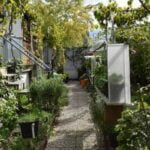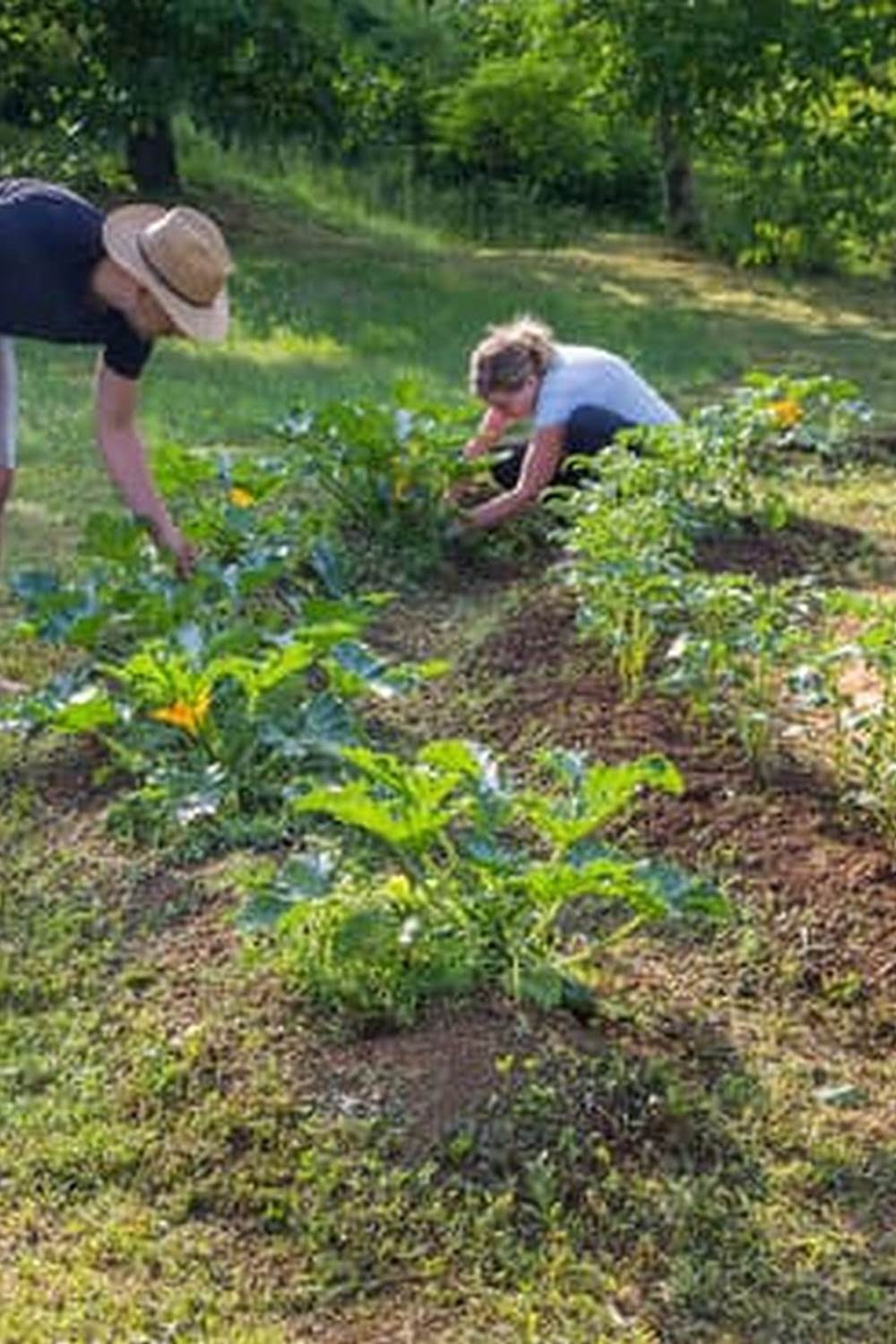Is newspaper ink safe for vegetable gardens is a common question among gardeners looking for sustainable and cost-effective ways to improve their soil. The use of newspaper in gardens has gained popularity due to its ability to suppress weeds, retain moisture, and promote earthworm activity.
However, concerns about the safety of the ink used in newspapers have raised questions about its potential impact on vegetable plants. In this article, we will explore the different types of newspaper ink, its potential toxicity, biodegradability, scientific research on the topic, best practices for using newspaper in gardens, alternative uses for newspaper, and ultimately whether it is a safe option for gardeners.
Gardeners often turn to newspapers as an affordable and eco-friendly way to control weeds in their gardens. With increasing awareness about sustainability and environmental impact, using newspaper as a natural mulch has become an attractive option.
However, the ink used in newspapers can raise concerns about the potential transfer of chemicals to the soil and into edible plants. Understanding the types of ink used in newspapers and their impact on plant health is crucial for making informed decisions about incorporating newspaper into vegetable gardens.
In this article, we will delve into the different types of newspaper ink, their potential toxicity on soil and plant health, and whether they break down harmlessly in the environment. By examining scientific studies and research conducted on this topic, we aim to provide gardeners with a comprehensive understanding of the safety of using newspaper in vegetable gardens.
Additionally, we will offer practical tips and alternative uses for newspapers in the garden that minimize any potential risks associated with its ink.
Types of Newspaper Ink
When considering the safety of newspaper ink for vegetable gardens, it is important to understand the different types of ink used in newspapers and their potential impacts on plants. The two main types of ink commonly used in newspapers are petroleum-based ink and soy-based ink.
Petroleum-Based Ink
This type of ink contains petroleum distillates, which are derived from non-renewable resources. It also often contains heavy metals such as lead, cadmium, and chromium, which can be harmful to both soil and plant health. When newspapers printed with petroleum-based ink are used in vegetable gardens, there is a risk that these harmful chemicals may leach into the soil and be absorbed by the plants.
Soy-Based Ink
On the other hand, soy-based ink is considered to be a safer alternative for vegetable gardens. It is made from soybean oil, which is a renewable resource, and it does not contain the same heavy metals found in petroleum-based ink. Additionally, soy-based ink is known to biodegrade more easily, minimizing any potential long-term impacts on soil quality.
It’s important for gardeners to consider the type of ink used in the newspapers they intend to use as mulch or weed barrier in their vegetable gardens. Opting for newspapers printed with soy-based ink can help mitigate potential risks associated with toxic chemicals leaching into the soil and impacting plant health.
Toxicity of Newspaper Ink
Newspapers have been a popular choice for gardeners as a way to control weeds and retain moisture in the soil. However, there has been concern about the safety of newspaper ink in vegetable gardens. In this section, we will investigate the potential toxicity of newspaper ink and its effects on soil and plant health.
When considering the safety of newspaper ink, it is important to understand the different types of ink used in newspapers. Most newspapers use either soy-based or vegetable-based inks, which are considered to be more environmentally friendly and safer for use in gardens. However, some older newspapers may still use petroleum-based inks, which can contain toxic chemicals such as lead and cadmium.
Research into the potential toxicity of newspaper ink on soil and plant health has produced mixed results. Some studies have shown that the components of newspaper ink can leach into the soil and affect plant growth, while others have found no significant impact on plants. It is important for gardeners to be aware of these potential risks and take precautions when using newspaper in their gardens.
To minimize any potential harm from newspaper ink, it is recommended to only use newspapers with soy-based or vegetable-based inks in vegetable gardens. Additionally, creating a barrier between the newspaper and the soil by adding a layer of mulch or compost can help reduce direct contact with the ink. Regularly checking the pH levels of the soil and monitoring plant health can also help mitigate any potential negative effects of newspaper ink on the garden.
Biodegradability of Newspaper Ink
Newspaper ink is primarily composed of carbon black, resins, and oils. Carbon black is a fine powder made from incomplete combustion of carbon-based products such as coal tar, ethylene cracking tar, and a small amount from vegetable oil. Most newspaper inks incorporate these materials to facilitate the drying process. When considering whether newspaper ink is safe for vegetable gardens, it’s crucial to understand its biodegradability and how it interacts with the soil.
Research has shown that the biodegradation of newspaper ink can vary based on several factors including environmental conditions, type of ink used, and the composition of the soil. Some studies indicate that certain components of newspaper ink can break down relatively quickly in soil environments, while others may persist for longer periods.
One study published in the Journal of Environmental Science and Health found that petroleum-based inks used in newspapers can leave residues in soils for an extended period before breaking down completely. However, soy-based inks, which are becoming more common as an environmentally friendly alternative, were found to degrade faster and have less impact on soil health.
This suggests that the biodegradability of newspaper ink is influenced by the specific type of ink used, with some posing fewer risks to vegetable gardens than others.
| Newspaper Ink Component | Impact on Soil |
|---|---|
| Carbon Black | May persist for long periods; potential impact on soil health |
| Petroleum-Based Inks | Leave residues for extended periods; slower degradation |
| Soy-Based Inks | Degrade faster; have less impact on soil health |
Studies and Research
Newspapers have long been used in gardens as a cost-effective and environmentally friendly way to control weeds and retain moisture in the soil. However, one common concern among gardeners is whether the ink used in newspapers is safe for vegetable gardens. To address this concern, various scientific studies and research have been conducted to determine the safety of newspaper ink for use in gardens.
A key consideration when evaluating the safety of newspaper ink is the type of ink that is used. Newspapers typically use either soy-based or petroleum-based ink. Soy-based ink is considered more environmentally friendly and has become increasingly popular due to its biodegradable nature.
On the other hand, petroleum-based ink contains chemicals that may be harmful to plants and soil. Research has shown that certain components of petroleum-based ink, such as heavy metals and solvents, can have negative effects on plant growth and soil health.
In addition to the type of ink used, studies have also looked into the potential toxicity of newspaper ink when it comes into contact with soil and vegetable plants. Research has shown that while soy-based ink poses minimal risk to plant health, certain components of petroleum-based ink may leach into the soil over time, potentially affecting the quality of the produce grown in vegetable gardens.
It is important for gardeners to be aware of these potential risks and take precautions when using newspapers in their gardens.
| Types of Newspaper Ink | Impact on Plants |
|---|---|
| Soy-Based Ink | Considered environmentally friendly and biodegradable |
| Petroleum-Based Ink | May contain chemicals harmful to plants and soil |
Best Practices
When using newspaper in gardens, it’s important to follow best practices to minimize any potential risks from the ink. While some concerns have been raised about the safety of newspaper ink for vegetable gardens, taking the right precautions can help ensure that using newspaper as a mulch or weed barrier is a safe and effective gardening method.
Use Black-and-White Newsprint
One of the best practices for using newspaper in vegetable gardens is to stick to black-and-white newsprint. This type of ink is generally considered safer than colored inks, which may contain a higher concentration of heavy metals and other potentially harmful substances. When sourcing newspaper for your garden, opt for plain black-and-white newsprint without glossy coatings or colored sections.
Avoid Direct Contact With Edible Parts of Plants
To further minimize any potential risks from newspaper ink, avoid placing it in direct contact with the edible parts of vegetables or fruits. Instead, lay down a layer of organic mulch such as straw or grass clippings on top of the newspaper to create a protective barrier between the ink and the soil. This can prevent any potential leaching of ink components into the soil and reduce direct contact with the plants themselves.
Monitor Plant Health
While using newspaper as a mulch or weed barrier, it’s important to monitor the health and growth of your vegetable plants. Keep an eye out for any signs of stress, discoloration, or stunted growth that could indicate potential issues related to the use of newspaper and its ink in the garden.
If you notice any adverse effects on plant health, consider removing the newspaper and implementing alternative weed control methods. By staying vigilant and attentive to your plants’ needs, you can address any concerns promptly and ensure a thriving vegetable garden.
Alternative Uses for Newspaper
When it comes to using newspaper in the garden, especially in vegetable gardens, some gardeners may have concerns about the safety of the ink used in newspapers. While the potential risks of newspaper ink on plant health are still debated, there are alternative ways to repurpose newspaper in the garden that do not involve direct contact with vegetable plants.
These alternative uses can provide benefits such as weed control, moisture retention, and soil improvement without posing potential risks from the ink.
One alternative use for newspaper in the garden is as a weed barrier. By layering newspaper sheets over the soil before adding mulch, gardeners can effectively suppress weed growth without having to worry about the ink coming into direct contact with their vegetable plants. The biodegradable nature of newspaper also means that it will eventually break down and become part of the soil, further improving its structure and fertility.
Another way to repurpose newspaper in the garden is by using it for composting. Shredded or torn newspaper can be added to a compost bin or pile as a source of carbon-rich “brown” material.
When combined with nitrogen-rich “green” material such as kitchen scraps or grass clippings, newspaper can help create a well-balanced compost that can be used to enrich the soil in vegetable gardens. This way, gardeners can make use of old newspapers without having to worry about any potential harm from the ink.
Conclusion
In conclusion, the safety of newspaper ink for vegetable gardens is a topic that continues to be debated among gardeners and experts. While there are different types of ink used in newspapers, some of which may contain potentially harmful elements such as heavy metals or petroleum-based compounds, there is limited scientific evidence to definitively prove that newspaper ink poses a significant risk to soil and plant health.
The biodegradability of newspaper ink also raises questions about whether it breaks down harmlessly in the soil or if it could have long-term effects on the environment.
It is important for gardeners to consider best practices when using newspaper in their gardens to minimize any potential risks from the ink. This includes avoiding direct contact between inked newspaper and edible parts of plants, as well as choosing newspapers with soy-based or vegetable-based inks when possible. Additionally, exploring alternative uses for newspaper in the garden, such as creating mulch or using it for weed control, can help reduce any concerns about the safety of the ink.
Ultimately, while there is some uncertainty surrounding the safety of newspaper ink for vegetable gardens, many gardeners continue to use this method with no apparent negative effects on their plants. However, it is important for individuals to make informed decisions based on their own comfort level and understanding of the potential risks. Further research and studies may provide more conclusive evidence on this topic in the future.
Frequently Asked Questions
Is It Safe to Use Newspaper in Vegetable Garden?
Using newspaper in a vegetable garden can be safe, as long as certain precautions are taken. The ink used in newspapers should be soy-based or vegetable-based, rather than petroleum-based.
Also, it is important to use only black-and-white pages, as colored inks may contain heavy metals or other contaminants that could be harmful to plants and soil. Overall, using newspaper as a mulch or weed barrier can be an effective and environmentally friendly practice in the vegetable garden.
Is Newspaper Ink Food Safe?
Newspaper ink is generally considered food safe when it is soy-based or vegetable-based. These types of inks are non-toxic and biodegradable, making them suitable for use around edible plants.
It’s important to avoid using newspapers with petroleum-based inks in the vegetable garden, as these inks may contain chemicals that could leach into the soil and potentially be taken up by plants.
Is Newspaper Ink Safe to Compost?
Soy-based or vegetable-based newspaper ink is safe to compost. When newspapers with these types of ink decompose in a compost pile, they break down naturally without leaving behind harmful residues.
The compost created from newspaper and other organic materials can then be used to enrich the soil in the garden, promoting healthy plant growth without introducing any toxic substances from the ink. However, it’s best to avoid adding glossy or colored pages to the compost pile due to potential contaminants they may contain.

If you’re looking to get into vegetable gardening, or are just looking for some tips on how to make your current garden better, then you’ve come to the right place! My name is Ethel and I have been gardening for years. In this blog, I’m going to share with you some of my best tips on how to create a successful vegetable garden.





